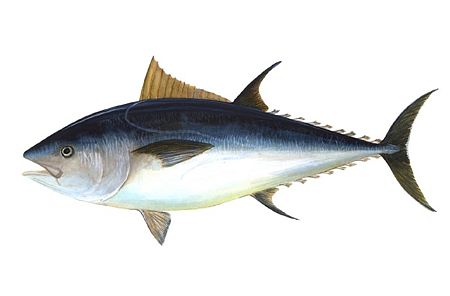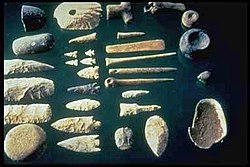Food? or sentient beings? [Market at Ortygia (Siracusa) in Sicily, September 2013. TWC photo.]
A recent article by Michael Pollan in
The New Yorker details major new scientific research that suggests that plants are far more sentient than most of us think. What does that mean for vegetarians? If that potato, or the celery stalk, or the raddicio are all ripped from living things with intelligence, able to to sense chemicals, sounds, light and react appropriately should we be eating them? Should we become
frutarians and only eat fruits, nuts, and seeds -- things that the plant wants to have separated from itself, to further its species?
And what about fermentation? Should we allow other creatures -- bacteria, yeasts, and fungi
to partially digest our fruits and nuts before we eat them, as suggested by Sandor Katz and others? Note -- when we eat the pickles, yogurt, bread, and the like, we are intentionally consuming whole clouds and colonies of these helpful creatures.
But then -- fruit. Should we even eat that? Eve "
ate of the fruit of the tree." Why was it a fruit, and not the leaf, or flower? Does this mean that fruit contains knowledge, like the pills imagined by L.Frank Baum that were distributed by the Highly Magnified and Thoroughly Educated
Woggle-Bug in "The Marvelous Land of Oz?"
Of course, much of the human race is omnivorous, eating meat and dairy products, along with fruits and vegetables. Whether their food is sentient or not generally doesn't enter into the calculus of whether it should be eaten, just as long as it's not the next door neighbor. For some vegetarians and religious groups, however, the intelligence of the food is an important issue. For them, the new research might raise questions about the ethics of eating the recommended five servings of fruits and vegetables daily.
Are plants really that smart?
"When food is scarce and acacias are overbrowsed, it has been reported, the trees produce sufficient amounts of toxin to kill the [antelopes]," says Pollan A plant that can produce its own weapons to kill an attacker sounds fairly "intelligent" to me.
Which is smarter, the corn or the geese?
Even better, "Several species, including corn and lima beans, emit a chemical distress call when attacked by caterpillars. Parasitic wasps some distance away lock in on that scent, follow it to the afflicted plant, and proceed to slowly destroy the caterpillars."
Plants use chemicals to communicate with each other, to defend themselves, and to attract creatures who will pollinate their flowers. An example is
caffeine, which a
New York Times article describes as both attractive to bees and toxic in larger doses to herbivores. Some plants deploy high doses of caffeine in seedlings, and in leaves and stems as toxins to discourage creatures that might eat them. Citrus plants, such as lemons, grapefruits and oranges,
have caffeine in their flowers, where it draws honeybees. They remember those flowers better, and return for another dose. Smart plant.
 Bees on an orange blossom
Bees on an orange blossom
Another example of clever (yes, that's anthropomorphizing) behavior is the ability of mushrooms to create little
winds that help spread their spores. A recent article describes how "oyster and shiitake mushrooms release water vapour that cools the air around them, creating convection currents. This in turn generates miniature winds that lift their spoors into the air." Scientists believe that it's likely that most mushrooms can do the same thing.
Anchorage mushrooms, August 2013 [TWC photo]
What about wheat?
Initial Google searches mostly turned up opinions about the evils of wheat. Is wheat attacking us, poisoning us with phytochemicals and gluten,so that we will stop eating it? That's what some of these writers appear to be saying. Given that today's wheats exist only because of human breeding, and could not live in the wild because their seeds are too tightly encased in the hulls, it would seem suicidal on the part of the wheat.
Alaska wheat at State Fair, August 24, 2013 [Photo, TWC]
Wheat plants do produce chemicals to fight off specific pests. Aphids, for example, are attracted to wheat seedlings that haven't been chewed on by other creatures. But once the aphids show up, the
seedlings emit odors into the air that repel other aphids. Other research done on corn and cotton plants shows that while the insect chews on the plant, it releases digestive juices that trigger the plant to create substances that will be toxic to the insect, and/or repel other insects, and/or attract parasitic wasps to come and lay their eggs on the invading insect. What's more, it does this during the daylight, and not at night when the insects aren't feeding.
Wheat field, Berrien County, Michigan. [Photo, Micki Glueckert]
Nonetheless,
the aphids continue to eat the wheat. British scientists are studying ways to change the wheat genes
so that it makes stronger insecticides. Others are looking at altering what happens in the tiny aphids' digestive systems so that they die from eating wheat, and other mechanisms to shift the natural balance in favor of the farmer. Aphids gotta eat too, son, but hopefully something else.
English grain aphid
Wheat doesn't just have insects and other creatures from the animal kingdom to fend off. Some weeds send out
chemicals through their roots that inhibit the growth of wheat that's nearby. "Roots of certain plants produce allochemic substances which check the growth of other plants to conserve resources, such as,
Convolvulus arvensis, a weed that inhibits the germination and growth of wheat."
Convolvulus is field bindweed, a morning-glory relative, and considered one of the most noxious weeds around. Horses that eat it get sick, it carries viruses that infect other plants, and it has a dozen different ways of invading and choking off other plants, above and below ground. [Parenthetically, it also is being studied for its ability to inhibit tumor growth, and might have other uses in medicine.]
Field bindweed
The microbiome -- wheat and microbes serve each other
At the other end of the spectrum, wheat, like all living creatures (humans included), survives only in a complicated network of microbes living around and on it. The microbes need the wheat just as much for their survival, as shown in
studies dating back at least to the 1920s. The wheat roots provide a surface for fungi to grow on, and the fungi draw nutrients from the wheat itself. But in exchange, the filaments that the fungi send out draw moisture to surround the wheat roots,
acting as tiny irrigation systems.
One experiment showed how wheat could be altered to grow in high heat and drought. Scientists sterilized the wheat seeds to remove their existing microbiomes, then covered them with microbes that normally grow on grasses that live near hot springs at temperatures of 160 degrees Fahrenheit. The wheat wrapped in its new microbiome thrived in the heat, and used 50% less water.
It does begin to look like plants, wheat included, can act with purpose to protect themselves, and to shape conditions to improve their lots in life. That doesn't mean that we should stop eating them and become breatharians (t
here's no evidence that that's a sustainable approach). If we could figure out a way for our own microbiomes to
incorporate chloroplasts, living on air along with soil, sun, and water has potential (
some creatures do this already). For now, at least, we might want to accept the fact that we live in a world of mutually interdependent species, and start enjoying all of the companions that we carry around with us.
St. Josep Market on Las Ramblas, Barcelona, November 4, 2011 [Photo, TWC.]



































